Modeling for execution#
BPMN does not end with visual modeling. BPMN 2.0 models can also contain all necessary execution instructions.
This is the use case of the properties panel of the modeler:
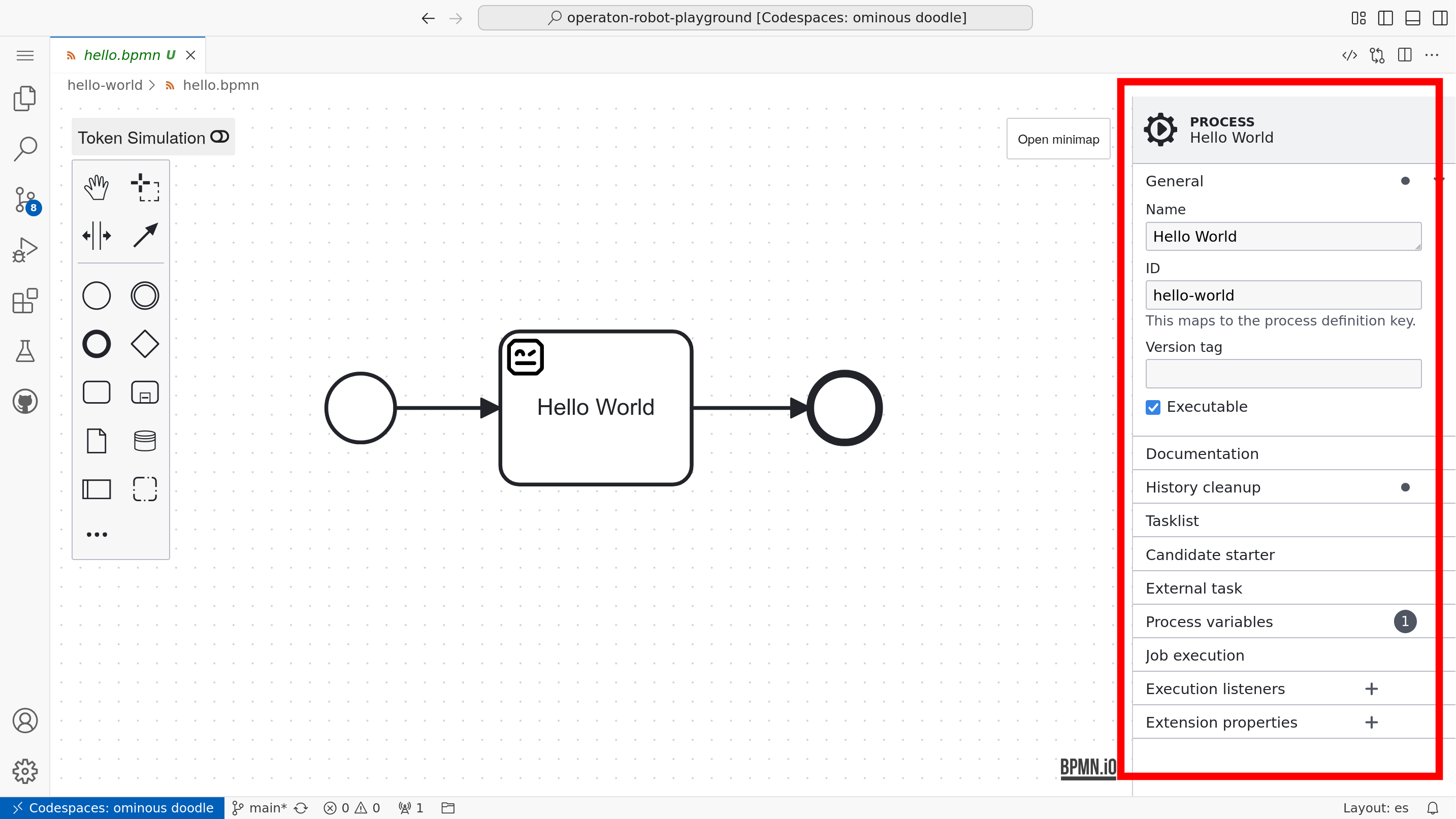
Tip
At the playground, you can create a new BPMN file with the pur bpm create hello-world.bpmn command in the terminal and then open the created BPMN file in the editor.
Process name and Id#
Every BPMN 2.0 model (process definition) for executable processes should have a descriptive display Name and a unique definition ID set, with the Executable option checked. These settings are available on the properties panel when no element is selected.
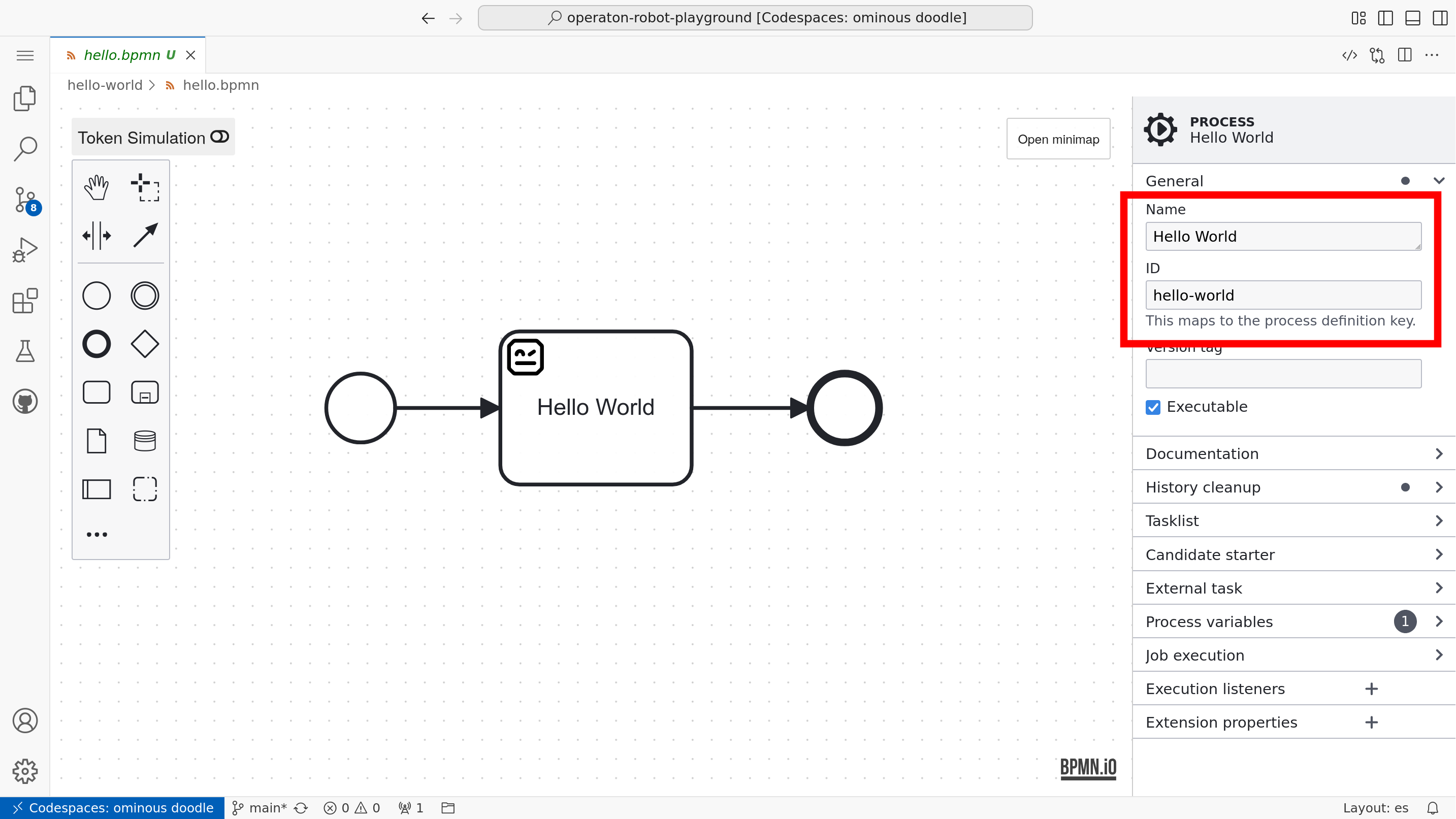
Note
When using Pools and Lanes, the process Name and ID should be set at the Pool element.
External task pattern#
External Service task is the feature of Operaton engine that allows to delegate work to be performed outside the BPM engine. Such work could include calling external services or performing long-running operations. And, of course, orchestrating
Robot Framework tasks.
To configure an external task in your BPMN model:
Add a
Service task onto your process diagram.
Set implementation type in the properties panel to
External.Specify topic. Define a topic name that external workers will subscribe to. This topic acts as a queue for tasks that workers will fetch and complete.
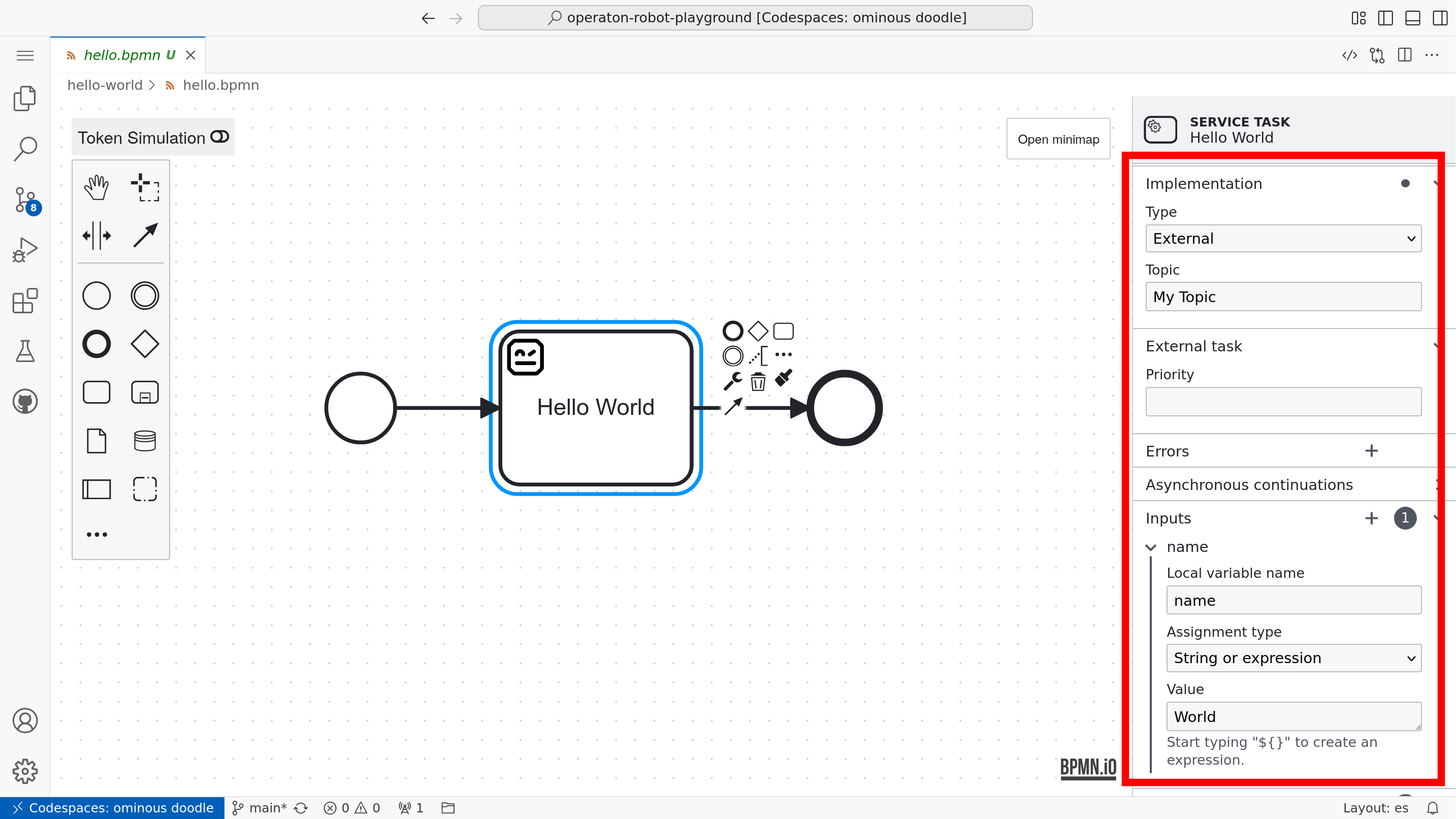
External task workers, like pur(jo) will then poll Operaton engine REST API for tasks with the specified topic, execute the required work, and report the completion results back to the engine.
Tip
At the playground, a dedicated plugin renders robot icon for all
Service Tasks with a word robot in their ID.
Inputs and outputs#
Process variables store data that can be accessed and manipulated throughout the lifecycle of a process instance. In addition to process level variables, Operaton engine supports nested variables scopes. These scopes are most often managed with input and output mappings for tasks and
sub-processes.
Use of inputs and outputs is not mandatory, but they support separation of generic re-usable services tasks with generic “arguments” for domain specific process variables. Use of inputs and outputs also protects for possible concurrent tasks later overriding each others process variables.
To configure input and output mappings for Service task, select the task in the modeler and navigate to the properties panel sections inputs and outputs.

The default expression language available for inputs mapping in Operaton is JUEL. This language allows you to reference process variables and perform simple operations on them.
Warning
Variables mapped in Service task inputs are only available within the task. Once the task is completed, the variables are no longer accessible unless they are exported at outputs.
Tip
Inputs and outputs can be used to map domain-specific process-level variables to generic task-level variables, to allow for generic, reusable, external task workers. This is similar to how functions in traditional programming are implemented and used.
Tip
File variables need to be mapped with the special expression ${execution.getVariableTyped("name")} or they could be coerced to the “Bytes” variable type.
Gateway paths#
Execution instructions include how Exclusive Gateways and
Inclusive Gateways determine which path the token should be directed to.
One of the outgoing paths from an exclusive gateway can be configured as the default path using the element context modeling palette.
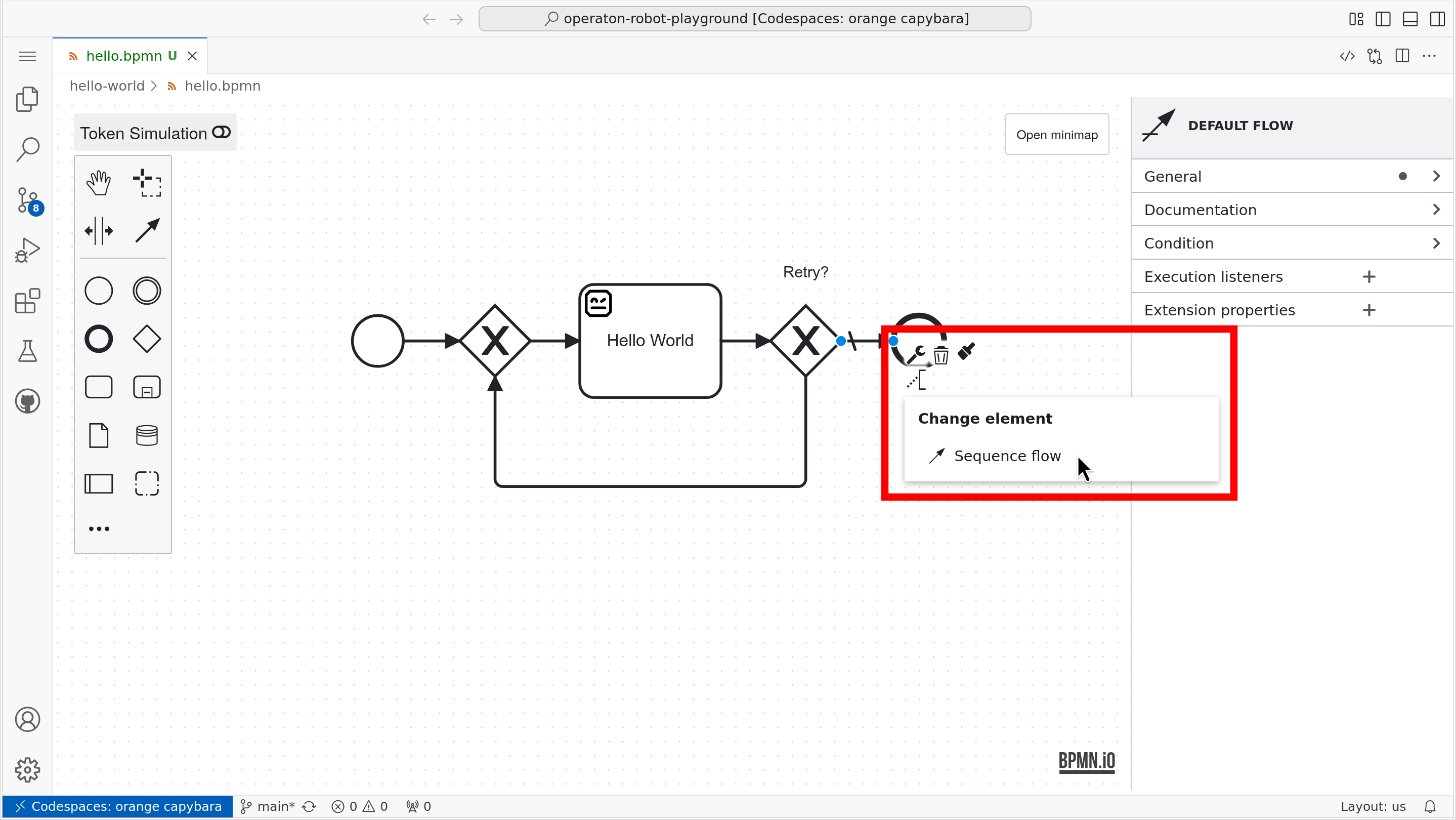
The rest of the paths should have condition expressions defined, using the expression language.
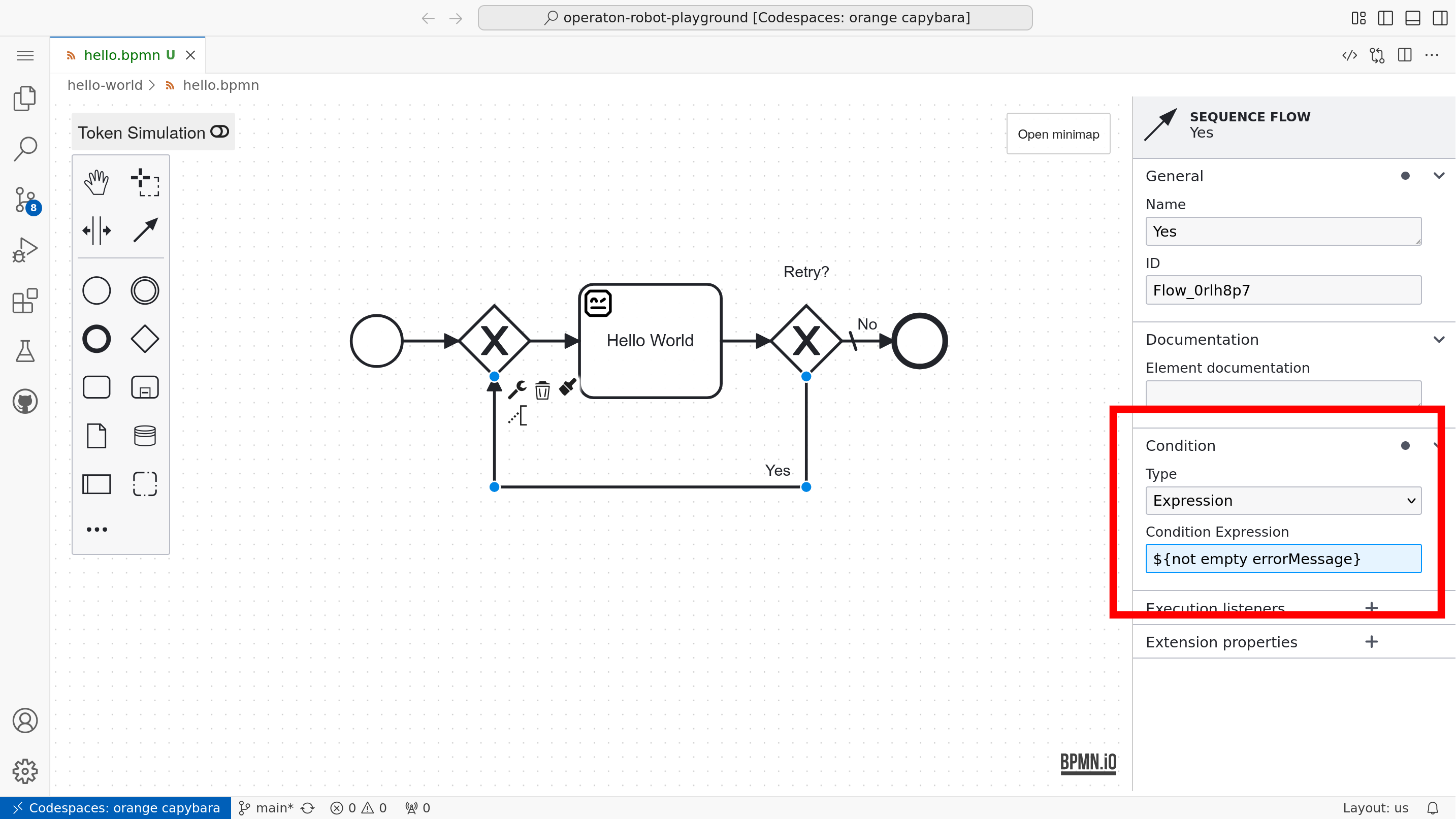
User tasks#
User Tasks are tasks performed by human actors. These tasks are typically used to model interactions between the process and users.
In practice, user tasks User Tasks are implemented by displaying the user a form. The implementation can be a completely custom “tasklist application”. The form can be configured to display process variables and allow the user to manipulate them. The filled form is submitted back to the engine by calling using its API.
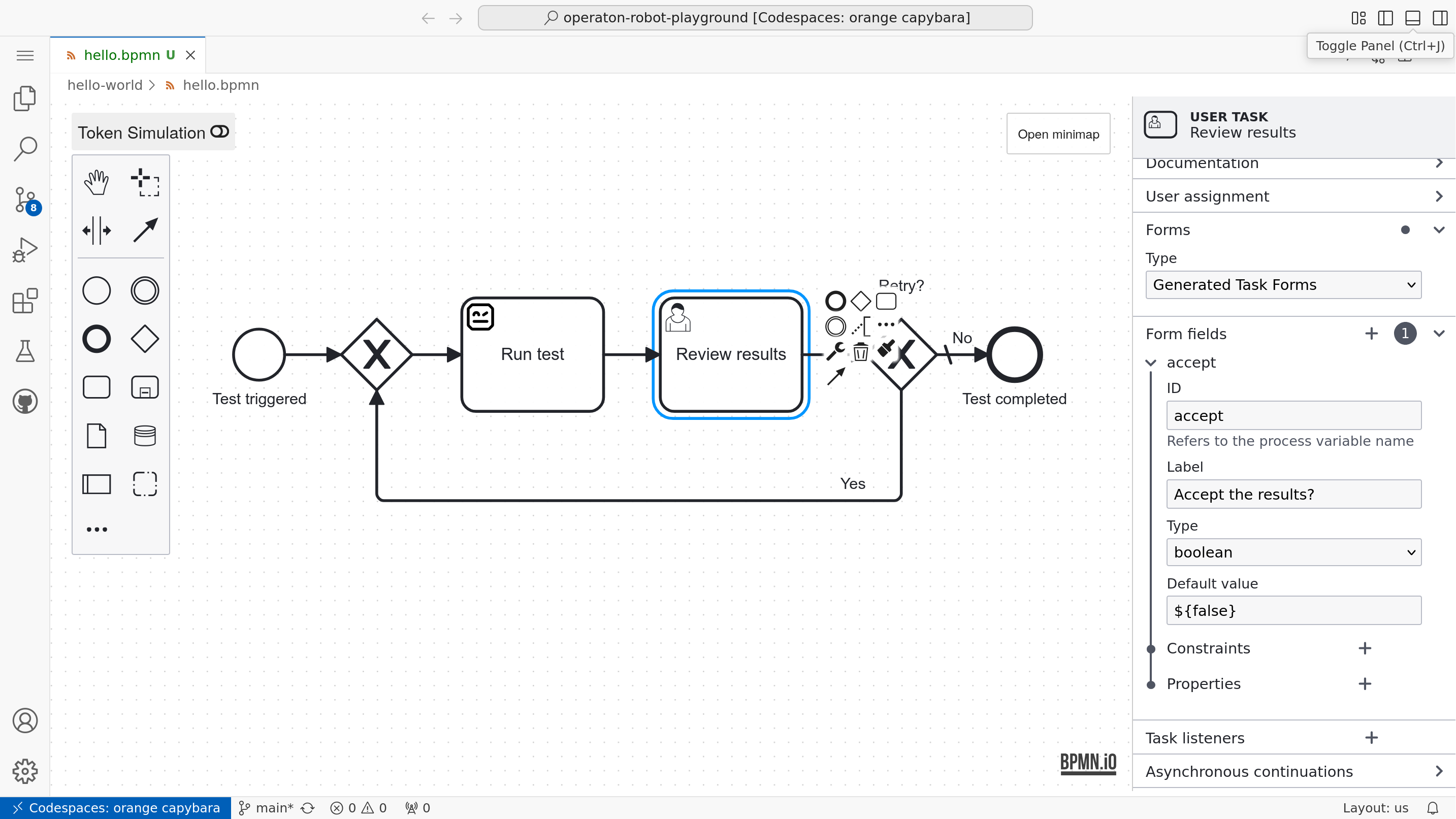
Operaton’s built-in tasklist application supports a few alternative form types. The modeler used in the playground, however, does not support “Camunda Forms”, but only Generated task Forms.
Warning
The form definitions options supported by Operaton’s builtin tasklist application may change before its final 1.0 release.